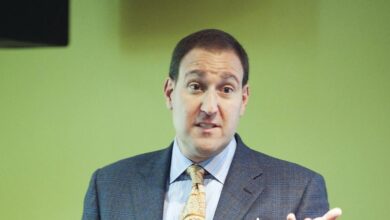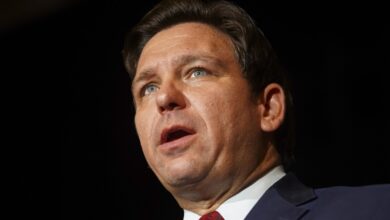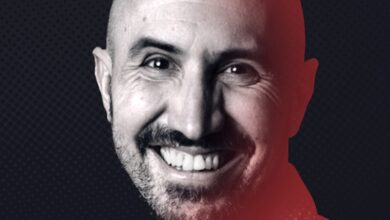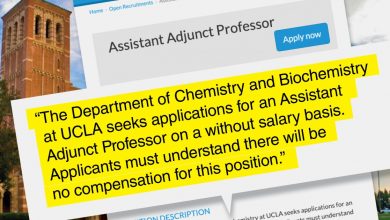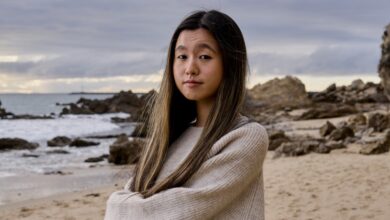Diversity Statements Are Under Fire. Here’s What They Are and How They’re Used.

Several states are taking aim at the use of diversity statements in hiring. Recently introduced legislation in Missouri would block their use, and last month the University of North Carolina system’s Board of Governors banned “compelled speech” for prospective students and employees.
Three public university systems in Texas have grabbed headlines in the past week for banning diversity statements, following a February letter from Gov. Greg Abbott’s office barring the consideration of factors “other than merit” in the hiring process. To include diversity, equity, and inclusion policies in hiring decisions, Abbott’s office wrote, violates federal and state employment laws.
The chancellors of the Texas A&M and Texas State systems on Thursday eliminated the diversity-statement requirement in hiring practices.
Renu Khator, chancellor of the University of Houston system, did the same on Friday, noting in a memo that “there have been reports regarding hiring practices at other state institutions where some committees may be asking for DEI statements for consideration in hiring and promotion decisions or otherwise using DEI as a factor in those decisions.”
Khator’s memo, a university spokesperson told The Chronicle, “serves as a reminder of our policies and that using DEI statements has become a disfavored practice. Discrimination is antithetical to our core values, and our employment policies and practices are consistent with these laws, and we have no offices, departments, or programs promoting discrimination in the guise of Diversity, Equity, and Inclusion.” (A Texas State spokesperson said that system had no further comment, and Texas A&M did not respond to a request for comment.)
Here’s a look at what diversity statements are, and how higher ed has employed them:
What is a diversity statement?
First popularized in the mid-2010s, diversity statements have become a mainstay of application processes for faculty jobs, required in some searches and requested in others. Candidates are asked to explain in a page or two how they’ve contributed to diversity, equity, and inclusion work in their academic lives.
The practice is intended to gauge the attitudes of potential employees toward issues of diversity, and to ensure new hires are committed to recruiting, and working with, a diverse student population. Diversity statements can also ensure that the extra service burdens sometimes borne by scholars of color don’t go unnoticed.
Why are they controversial?
Asking candidates to write a statement expressing their relationship to various parts of a university’s mission is “a normal thing,” John Tomasi, president of Heterodox Academy, said this week during a visit to The Chronicle’s offices. “I think the difficulty is when the perception or the reality is that the evaluative criteria that are being used to check the goodness of your answer, the fit of your answer, invokes a politically or morally contentious set of criteria.”
Critics say forcing candidates to submit diversity statements pressures them to espouse progressive views; a report released last week by the Foundation for Individual Rights and Expression found that faculty members were split over whether the statements constitute “a justifiable requirement for a job at a university” or “an ideological litmus test that violates academic freedom.”
The University of California system made headlines in 2018 by requiring that applications for tenure-track positions and promotions include an “Equity, Diversity, and Inclusion” statement; scores of other institutions have since followed suit. Chris M. Golde, a career coach for doctoral students and postdoctoral fellows at Stanford University who often works with job candidates on their statements, estimates that about half of colleges and universities now require them for faculty jobs. That proportion, Golde says, has risen sharply since George Floyd’s murder, in 2020, prompted many institutions to re-examine their DEI practices and commit to them more publicly.
Detractors offer various other critiques. Last spring, for example, the University of Washington’s faculty rejected a proposal to have professors submit a diversity statement as part of the tenure process, based, as one faculty member wrote, “on a strong belief that faculty should never be forced to subscribe to a certain political viewpoint or to pay homage to a current trendy set of ideas.” Some faculty members of color have said writing diversity statements is unnecessary extra labor.
Are they legal?
Abbott’s office says requiring diversity statements constitutes illegal discrimination against some demographic groups. Recently proposed bills in Florida, Utah, and West Virginia would also ban mandatory DEI statements at public colleges in those states.
Jeffrey Flier, a former dean of Harvard University’s medical school, argued when the University of California system mandated diversity statements that they marked “an affront to academic freedom,” noting in The Chronicle that, “though well-intentioned, such statements will open the door to political influence, which should be anathema.”
But while their legality has been questioned, Brian Soucek, a law professor at the University of California at Davis, has written that “mandatory diversity statements are constitutional — at least if they are done the right way.”
What’s in a diversity statement?
Guidance on how to write a diversity statement varies by institution, and only about 35 percent of diversity statements come with a prompt, says Manya Whitaker, an associate professor of education, executive vice president, and chief of staff at Colorado College who consults with other institutions on the subject and is an occasional contributor to The Chronicle. But common advice holds that job candidates should offer information about their experience in the field, including service or committee work with underrepresented populations, relevant research and scholarship, and pedagogical approach to diversity. Many campus websites offer guides to writing diversity statements; some also include sample submissions.
When diversity statements arrived on the scene, applicants often used them to talk about their own identity and background, in large part because they weren’t sure what else to write, Golde says. But in recent years, rubrics offering hiring committees a blueprint for judging diversity statements have helped candidates clarify what to focus on. As a result, the statements applicants submit, Golde says, have become less personal essay and more action-oriented, focusing on their DEI-related past work, and what they imagine their future work to be. That’s as it should be, Whitaker says, because diversity statements shouldn’t be a confessional or an autobiography.
While most diversity-statement prompts that Golde sees follow the same basic template, there are enough “flavors” that it’s often impossible for applicants to reuse their writing for multiple jobs. One institution might ask for a three-page diversity statement, another a five-page document that’s a joint research-and-diversity, or teaching-and-diversity, statement. “It’s not like a Common App for undergraduate applications,” she says.
How are diversity statements used in hiring?
A common misconception is that diversity statements are used to eliminate candidates, Whitaker says. “It’s not something that we use to say, ‘This person is racist or classist or sexist,’ and we push them out. It’s a way to say, ‘Show us another part of yourself that traditional academia doesn’t often invite.’”
The role such statements actually play during the hiring process varies widely, by institution as well as by the specific job being filled, Whitaker says. While several institutions, including Brandeis, Michigan State, and Brown Universities, offer rubrics for hiring committees to use when judging diversity statements, many more don’t. In fact, 85 percent of DEI professionals surveyed for a 2022 paper said they lacked guidance from their institution on evaluating diversity statements.
“It’s really surprising how often diversity statements are required these days, and yet people are sort of navigating in the darkness with no guidance,” one of the paper’s authors, Sara P. Bombaci, told Colorado State University at Fort Collins’s news service. “As with all parts of the hiring practice, you want a standardized way for evaluating candidates.” Bombaci and Liba Pejchar, both of whom teach in Colorado State’s department of fish, wildlife, and conservation biology, said they had been motivated to write the paper based on their experience on a search committee.
As Bombaci and Pejchar write, diversity statements alone aren’t sufficient to gauge a candidate’s true commitment to DEI work. The same sorts of concerns cropped up 25 years ago, when teaching statements first came into vogue, Golde says: “‘Are these genuine statements? Are people just copying from each other? How do we know?’” To answer those questions, the professionals surveyed for the Colorado State study recommend reviewing candidates’ other written materials — their cover letters, research and teaching statements, and recommendation letters — as well as using screening questions and information from interviews, job talks, and meetings with students, faculty, and staff to get a fuller picture of their stance on diversity.
Golde’s students at Stanford often ask her the same questions about diversity statements that they do about other parts of the job application: In what order will hiring-committee members read them? How will they be weighted in comparison to the other materials they submit? Golde doesn’t know the answers — she’s not on hiring committees — but she says the same degree of “mystery” applies to the other materials. “We can make some predictions based on the values of the institution,” she tells her students, “but I can’t tell you what’s going to happen in a particular committee.”
That there is no industry standard for judging diversity statements, and no single way to anticipate how a particular committee will evaluate them, is as it should be, Whitaker says. The statements are part of a bigger picture. “It’s just another piece of a larger package of information,” she said. “Whatever is said in that diversity statement should be substantiated in a teaching statement or philosophy, should be substantiated in a research agenda or in a cover letter.”
Source link


